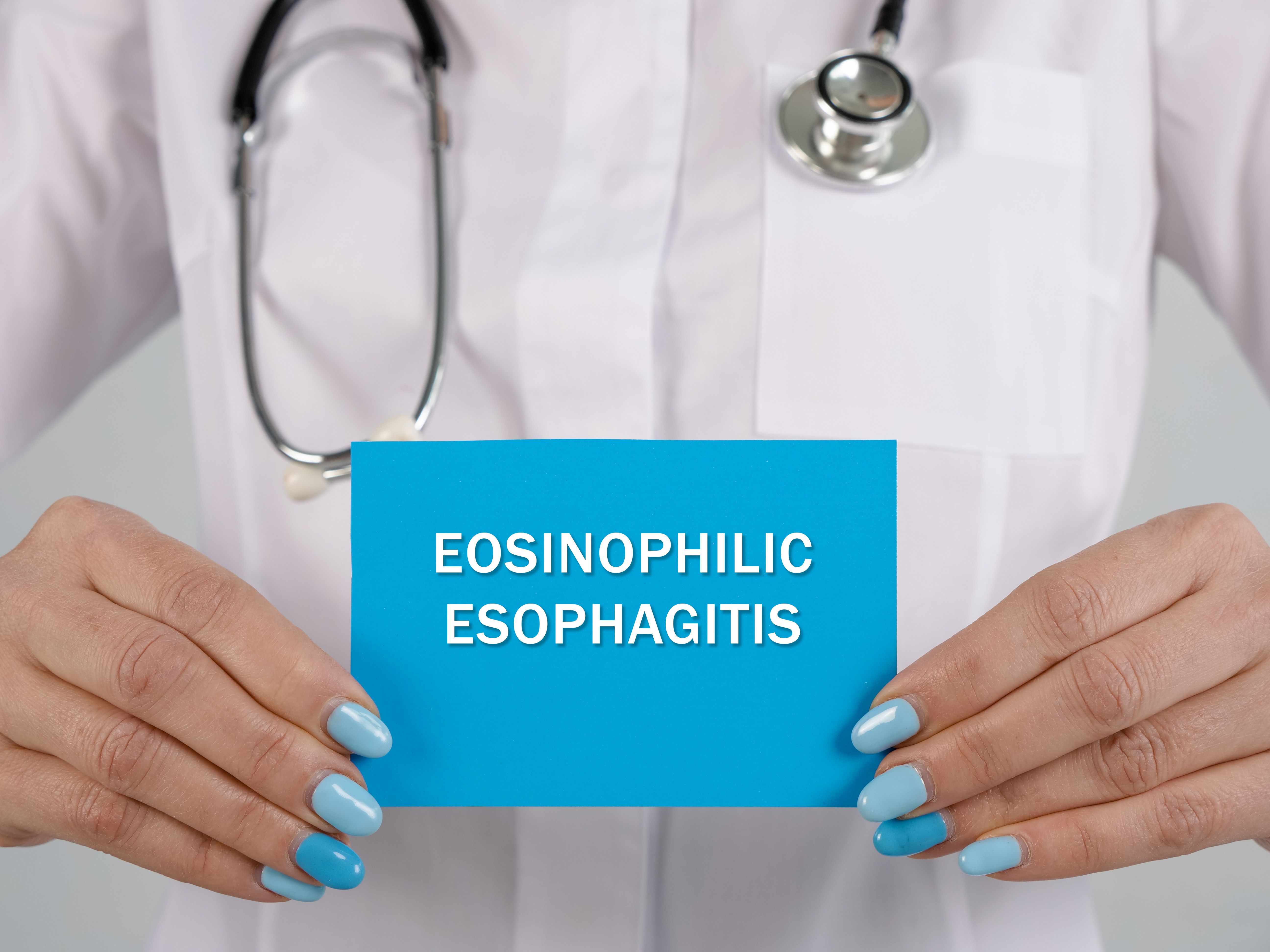Article highlights
- Regeneron and Sanofi's analysis of dupilumab in children aged 1 to 11 with EoE shows positive results, indicating consistent efficacy and safety for up to a year.
- Children continuing dupilumab had a 63% disease remission rate, while those switching from placebo achieved 53% remission. The treatment led to reduced disease severity, extent, and improved symptoms.
- Participants experienced increased body weight percentile, and safety findings align with dupilumab's known profile.
- FDA accepted a sBLA for dupilumab in this age group, with a potential approval decision expected by January 31, 2024.
In the first analysis of longer-term data for dupilumab (Dupixent; Regeneron and Sanofi) in children aged 1 to 11 years with eosinophilic esophagitis (EoE), Regeneron and Sanofi recently announced positive results.1
EoE, a chronic and progressive disease driven by type 2 inflammation, damages the esophagus, preventing normal function. Vomiting, heartburn, abdominal discomfort, food refusal, trouble swallowing, and failure to thrive are common EoE symptoms in children.1
Impacted growth and development can be the result of these symptoms, causing food-related fear and anxiety that can continue in adulthood. Eliminating food groups and other dietary adjustments are standard treatment for EoE, as are proton pump inhibitors and swallowed topical corticosteroids, though these treatments are not approved for the disease.1
The pharmaceutical companies revealed dupilumab demonstrated consistent efficacy and safety for up to 1 year, as part of an extended active treatment period in a phase 3 trial. The extended active treatment time period (Part B of phase 3 trial) followed 16 weeks of dupilumab treatment or placebo (Part A).1
All children in Part B were treated for an additional 36 weeks with dupilumab at higher or lower doses. Thirty-seven patients aged 1 to 11 years continued a higher dose of dupilumab in Part B, while 18 individuals switched from placebo to dupilumab.1
Results demonstrated that 63% of children who continued at a higher dose in Part B achieved histological disease remission, as did 53% of participants who switched to dupilumab from placebo.1
Of children who continued dupilumab, a 0.97 reduction from baseline in disease severity and a 0.89 reduction in extent (measured at the microscopic level in biopsy specimens) was observed. A 0.89 reduction in disease severity from baseline was observed in individuals that switched from placebo, while a 0.86 reduction from baseline in extent was observed.1
In patients that continued dupilumab in Part B and in those who switched from placebo to dupilumab in Part B, a 4.8- and 3.6-point reduction in abnormal endoscopic findings from baseline were reported, respectively. Further, a 0.30- and 0.47-point numerical improvement in caregiver reported pediatric signs and symptoms (measured by Pediatric Eosinophilic Esophagitis Sign/Symptom. Questionnaire for Caregivers [PESQ-C]) was observed, respectively.1
A 5.96 percentile increase in body weight for age percentile compared to baseline was reported for those who continued dupilumab treatment. The percentile increase in body weight compared to baseline for individuals who switched from placebo to dupilumab was 5.48, respectively.1
Overall, the safety results observed in Part B were “generally consistent with Part A and the known safety profile of [dupilumab] in its FDA-approved EoE indication for adult and adolescent patients aged 12 years and older who weight at least 40 kg,” stated Regeneron in a press release.1
On September 26, 2023, a supplemental Biologics License Application (sBLA) for dupilumab was accepted by the FDA and received Priority Review designation to treat children aged 1 to 11 years with EoE. A Prescription Drug User Fee Act (PDUFA) date of January 31, 2024, was given to Regeneron and Sanofi for potential FDA approval.2
References:
- Dupixent (dupilumab) phase 3 results show sustained efficacy for up to one year in children 1 to 11 years of age with eosinophilic esophagitis (EoE). Regeneron Pharmaceuticals. Press release. October 22, 2023. Accessed November 1, 2023. https://investor.regeneron.com/news-releases/news-release-details/dupixentr-dupilumab-phase-3-results-show-sustained-efficacy-one
- Dupixent® (dupilumab) sBLA for treatment of eosinophilic esophagitis in children aged 1 to 11 accepted for FDA Priority Review. Sanofi. Press release. September 26, 2023. Accessed November 1, 2023. https://www.sanofi.com/en/media-room/press-releases/2023/2023-09-26-05-30-00-2749151
